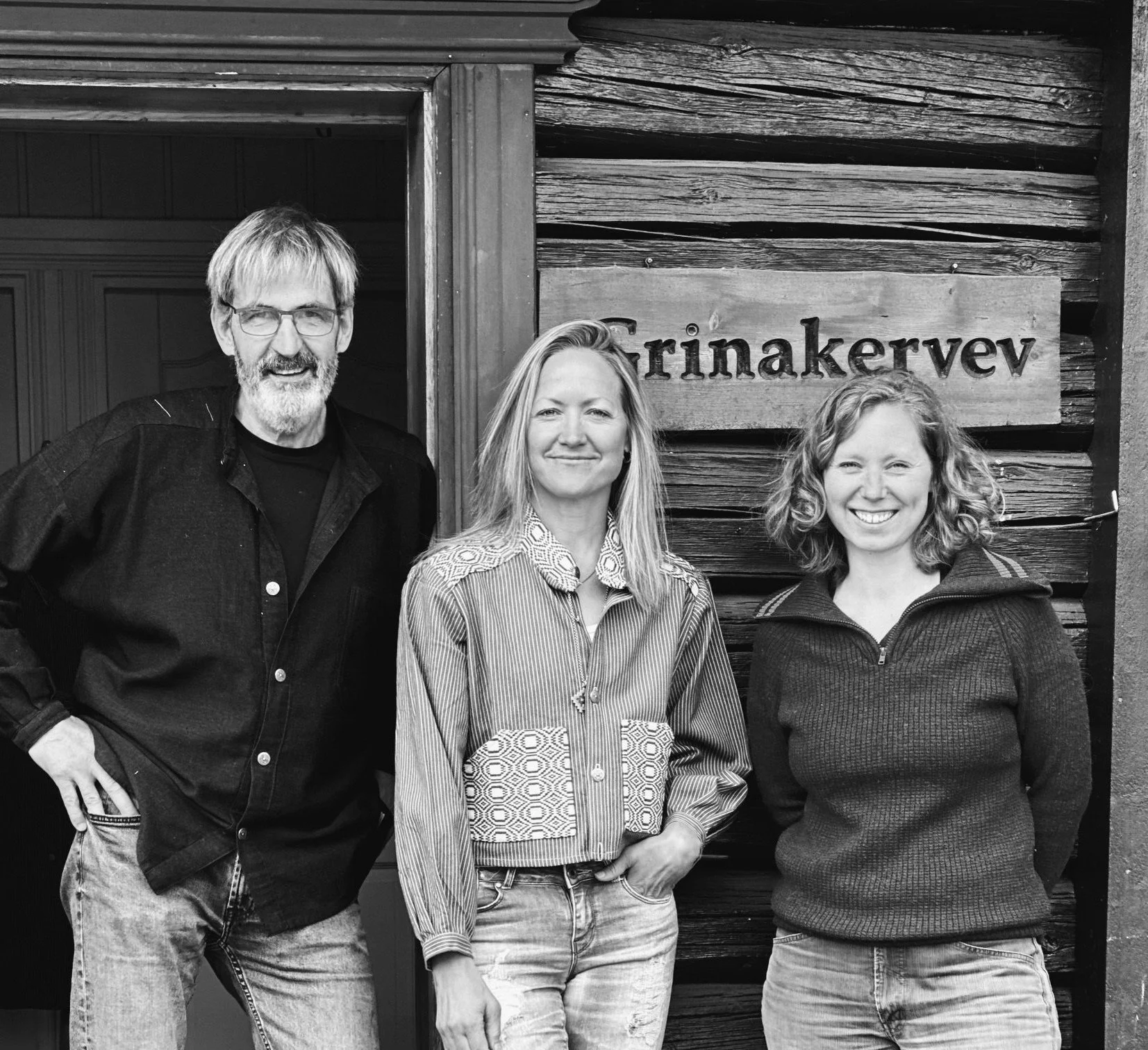The Story.
A mill with a story.
Grinakervev
Arv Recut Collection
A quiet tribute to tradition, reshaped into something new. This garment is the result of a shared vision with five small Norwegian studios—Grinakervev, Plasteriet, Øvrebø Smykkeverksted, Tinn-Per, and Recouture—each dedicated to local craftsmanship, heritage, and a more circular future for design and production.
The Arv Recut Shirt draws inspiration from the timeless striped cotton fabric associated with the classic busserull—celebrated for its quality and lasting visual appeal. Woven at Grinakervev in Hadeland, the fabric is a 4-shaft even-sided twill, known as Batavia.
The silhouette has been updated with a more contemporary shape, while staying true to the integrity of the original material. In signature Recouture style, an åkle detail developed at Grinakervev—woven from the same yarn as the base fabric—adds both uniqueness and cultural depth.
Arv Recut is a bridge between heritage and tomorrow—shaped in collaboration with Grinakervev, who continue the legacy of Hofsbro’s weaving tradition from 1928 using the original warp setup developed by Kari Nilsen. That same lineage is now transformed into a contemporary garment. This project is my way of paying tribute to that journey: respecting where we come from while shaping what comes next —made locally, designed to last, to be worn, and to carry its story forward.
Busserull & the cotton fabric
The busserull is often seen as classic Norwegian workwear, but its origins stretch back to medieval Europe. Over the centuries, Norway adopted and adapted this practical garment, adding local weaving styles and regional variations along the way. Traditionally, the busserull is made from square and rectangular fabric pieces. It could be sewn from almost any fabric, though the striped cotton version has become the most iconic. Farmers, fishermen, and laborers wore it because it was strong and practical—but a newly made busserull could also be worn for special occasions.
Locally in Hadeland we also have variations on the design but the twill-woven cotton fabric began its journey at Hofsbro weaving mill in Gran, founded in 1928. Kari Nilsen set up the first warp for this fabric and is today the same warp Grinakervev is using.
The Hadelandsbusserull, originally designed at Hofsbro, has practical elements, such as a zipper and elastic in the back, making it better suited for work and is a traditional well liked garment. Another variation, the Livørsbusserull, had buttons down the front and was often chosen by older people who found it more convenient than pulling a garment over their heads. Today, Grinaker’s classic busserull is a pullover with buttons and a traditional spensel at the back, and it has become a favorite among the younger generation.
Grinakervev
Grinakervev is a weaving mill located on the historic Nordre Grinaker farm in Brandbu, Hadeland. It was established in 1988 by Elin Lyngstad and her husband Kåre, who started with just a few looms and a strong dedication to Norwegian textile traditions. Today, their son Jo Lyngstad continues the family’s legacy.
Grinakervev creates a wide range of fabrics for both clothing and interiors and is weel known for their damask and "dreiel" weaves, . One of their most valued roles is carrying on the tradition of weaving fabric for the busserull. They still use the same warp setup first prepared by Kari Nilsen at Hofsbro weaving mill in Gran back in 1932. Preserving this exact method is a meaningful way to honor local textile heritage and the Nilsen family's contribution.
Today, Grinakervev produces the busserull fabric in a variety of cotton colors, although the classic medium blue remains the most traditional and familiar to people in Hadeland. They’ve also created children’s festive garments and other designs using this iconic material.
You can visit Grinakervev, and explore the weaving workshop, shop products and textiles, or relax with a coffie in historic surroundings.




